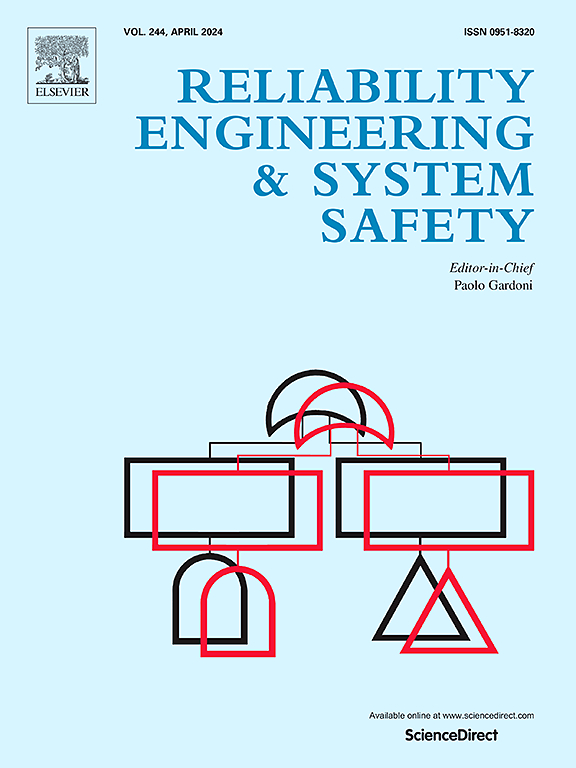Enhanced prediction of pipe failure through transient simulation-aided logistic regression
IF 9.4
1区 工程技术
Q1 ENGINEERING, INDUSTRIAL
引用次数: 0
Abstract
To reduce leakage and improve the stability of the water supply system, water companies are increasingly adopting pipe failure prediction models based on hydraulic and non-hydraulic factors. However, these companies often face the challenge of limited data and conventional hydraulic factors have limited predictive capability in capturing the complex dynamics of pipe failures. This study proposed a logistic regression model based on hydraulic transient simulation, illustrated with the real case of a Chinese city. The data recorded included 246 pipe failures in one year. The model considered the influence of pressure, flow rate variations, and the network topology of the water supply system through hydraulic transient simulation and quantitatively analyzed the simulation results. The logistic regression model combined non-hydraulic factors with the quantitative analysis results of hydraulic factors to predict pipe failures. This study risk-categorized six areas that were prone to pipe failures. The developed model demonstrated significant accuracy and reliability in predicting pipe failures at high-risk levels. 75.61 % of true failure events were correctly predicted and the area under the curve values (AUC) value increased from 0.706 to 0.809 when incorporating transient simulation. This demonstrates that the model is effective in capturing the dynamic characteristics of the hydraulic factors and exhibits a high degree of accuracy even with a limited amount of data. This provides a feasible solution for water companies to accurately predict pipe failures.
求助全文
约1分钟内获得全文
求助全文
来源期刊

Reliability Engineering & System Safety
管理科学-工程:工业
CiteScore
15.20
自引率
39.50%
发文量
621
审稿时长
67 days
期刊介绍:
Elsevier publishes Reliability Engineering & System Safety in association with the European Safety and Reliability Association and the Safety Engineering and Risk Analysis Division. The international journal is devoted to developing and applying methods to enhance the safety and reliability of complex technological systems, like nuclear power plants, chemical plants, hazardous waste facilities, space systems, offshore and maritime systems, transportation systems, constructed infrastructure, and manufacturing plants. The journal normally publishes only articles that involve the analysis of substantive problems related to the reliability of complex systems or present techniques and/or theoretical results that have a discernable relationship to the solution of such problems. An important aim is to balance academic material and practical applications.
 求助内容:
求助内容: 应助结果提醒方式:
应助结果提醒方式:


